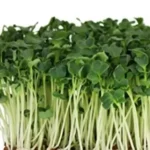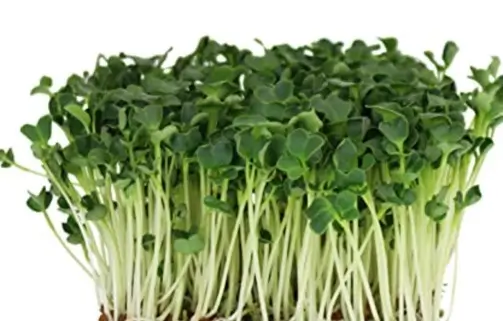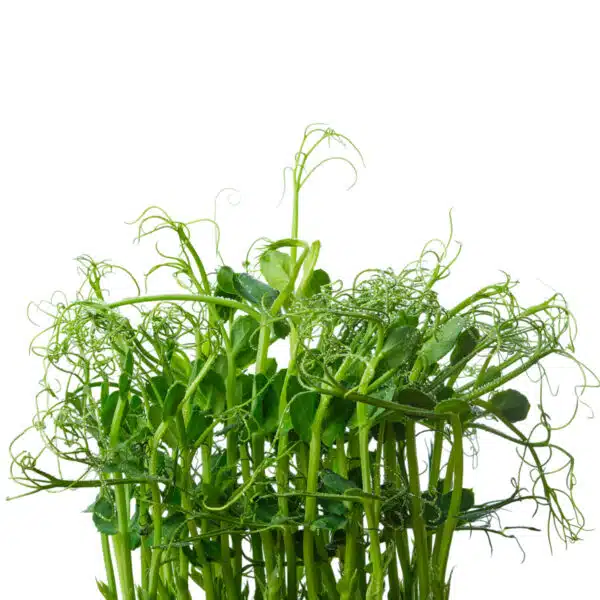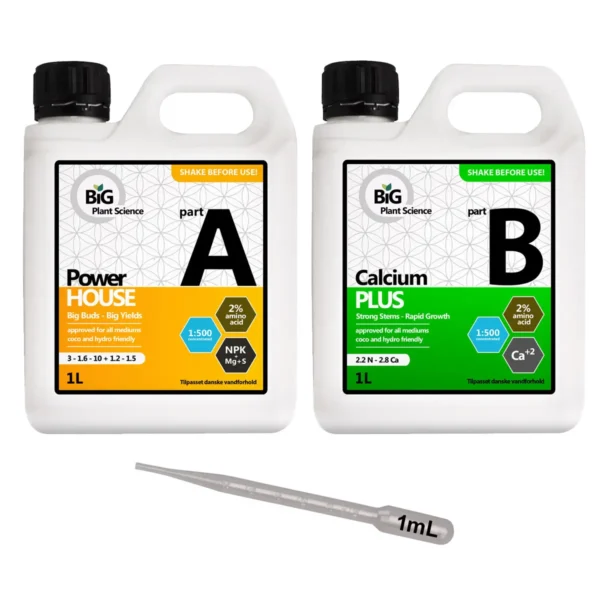Description
Organic green Daikon radish seeds - White stem, Daikon
The seeds turn into a white-stalked sprout, perfect for adding to salad or other forms of cooking. Radish seeds add a delicious flavor to cooking, and they taste exactly like a full-grown radish.
The seeds should preferably be stored dry and cool, and seed sprouts will be ready to eat after 2-6 days, after sowing.
Is also extremely suitable for microgreen production.
About Daikon Radishes
Daikon radishes, known for their slender white stems and piquant flavor, have roots that extend deep into the soil of East Asia, particularly in countries such as Japan and China. These radishes have not only enriched the region's culinary landscape, but have also found their way into global kitchens, where they continue to add a special flavor and texture to a variety of dishes.
Origin and Cultural Rooting
Japan: Birthplace of Daikon
- Origin of the name: The term "daikon" is taken from the Japanese language, where it means 'big root', a description that is as precise as it is poetic, and illustrates the significant place of the radish in Japanese cuisine.12.
- Cultivation history: Daikon radishes have been an indispensable part of the Japanese agrarian landscape, where they are valued for their high yield and culinary versatility. They are a regular part of the daily diet for many residents, who find their fresh, spicy taste indispensable.3.
China: A Culinary Treasure
- Culinary Diversity: Just like in Japan, Daikon radishes in China have found their place in a multitude of culinary expressions. Their slightly sweet, spicy flavor complements a wide range of dishes, from salads to rich soups and stir-fries.1.
Daikon's Global Footprint
Daikon radishes have transcended their East Asian roots and moved onto dining tables around the world, where they continue to delight foodies with their unique flavor profile.
Timeline for Daikon Radishes' Journey
| Time period | Region | Landmark |
|---|---|---|
| Antiquity | East Asia | Originally cultivated in China and Japan |
| 17th century | Europe | Arrival in Europe via trade routes |
| 1900s | North America | Introduction to North America and increasing popularity |
| The 2000s | Globally | Global recognition and spread as a culinary delicacy |
Remember to add liquid BIG A+B fertilizer during growth for maximum yield.
Contact us for a discount on larger quantities of seeds...
Tested and certified organic seeds
Tested for the following harmful bacteria:
- Bacillus cereus
- Salmonella spp.
- Listeria monocytogenes
- Verotoxin-producing E. coli
Read more about radishes here











Reviews
There are no reviews yet.